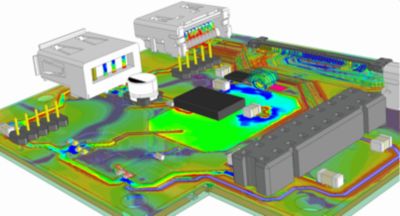-
-
Software gratuito per studenti
Ansys potenzia la nuova generazione di ingegneri
Gli studenti hanno accesso gratuito a software di simulazione di livello mondiale.
-
Connettiti subito con Ansys!
Progetta il tuo futuro
Connettiti a Ansys per scoprire come la simulazione può potenziare la tua prossima innovazione.
Paesi e regioni
Customer Center
Supporto
Partner Community
Contatta l'ufficio vendite
Per Stati Uniti e Canada
Accedi
Prove Gratuite
Prodotti & Servizi
Scopri
Chi Siamo
Back
Prodotti & Servizi
Back
Scopri
Ansys potenzia la nuova generazione di ingegneri
Gli studenti hanno accesso gratuito a software di simulazione di livello mondiale.
Back
Chi Siamo
Progetta il tuo futuro
Connettiti a Ansys per scoprire come la simulazione può potenziare la tua prossima innovazione.
Customer Center
Supporto
Partner Community
Contatta l'ufficio vendite
Per Stati Uniti e Canada
Accedi
Prove Gratuite
ANSYS BLOG
October 23, 2020
Reinventing How Physics Is Taught with Ansys Simulation Tools
Amidst the coronavirus pandemic, millions of students, engineers and practitioners in technical fields are flocking to the internet to attend online classes. They are relying on online courses to expand their technical skills and knowledge, and to weather the economic storm caused by the pandemic. Companies have mandated teleworking to conduct parts of their businesses online. The same holds true for universities, which, whether partially or fully shuttered, are holding classes virtually rather than on campus.
Online learning has been popular for many years, especially with the advent of massive open online courses (MOOCs). The pandemic has amplified their need and benefits.
It has also fostered new ways to teach physics and engineering concepts. Ansys Innovation Courses are our testimony to that. They offer a novel approach to teaching engineering and physics through the use of simulation tools. Ansys has developed courses to help students learn and examine physics concepts through the lens of simulation.
Simulation 101
But what is simulation? Simply put, it reproduces the behavior of a device, object, system or phenomenon in the virtual world. Take the phenomenon of electromagnetics as an example. Contemporary society depends heavily on wireless electronic devices such as smartphones. All wireless devices rely on electromagnetic waves to communicate with each other.
Electric field on a PCB simulated in Ansys HFSS.
Electromagnetic fields dictate the behavior of these wireless and electronic devices. We can’t observe these fields or currents flowing on a printed circuit board of an electronic device in a lab. However, in an electromagnetic design and simulation tool such as Ansys HFSS, we can visualize the fields within and outside a device.
Simulation helps us understand a device’s principle of operation and characteristics. Simulation also helps us optimize device performance and efficiency. Ansys tools can help beginners and designers obtain a solid footing in simulation to design both simple and advanced physics-based models, especially now when access to labs is restricted.
Laboratory experiments are key components of research and learning programs involving engineering, physics and other technical fields. The good news is simulation can serve as a reasonable substitute for labs. Experimentation using Ansys simulation tools can help learners comprehend engineering principles even when labs are off limits because of social distancing.
Online Courses Provide Hands-on Experience
The Ansys Innovation Courses cover subjects in mechanical engineering, computational fluid dynamics (CFD), electrical engineering and science, technology, engineering and math (STEM) topics.
Electric field from a smartphone during human device interaction in Ansys HFSS
The courses are structured to give you hands-on experience with Ansys tools and build expertise in your chosen engineering disciplines. They include lecture videos, handouts, exercises and quizzes to reinforce the topics. The courses can be used with Ansys free student software or the Ansys software you already have access to from your university or company.
View this recorded webinar to learn more about Ansys Innovation Courses and how you can benefit from them.
Ansys Innovation Courses also equip you with an experiential understanding of Ansys tools that can open up opportunities in the job market, since Ansys tools are used widely in various industries.
Plus, simulation enables you to visualize and grasp physics concepts effectively. It provides evidence-based examples that help you to see physics concepts in action in the virtual world, rather than just reading about them in textbooks or attending classroom lectures.
Here it’s apt to quote Abigail Adams, the second First Lady and first Second Lady of United States, who wrote in a letter to her son John Quincy Adams circa 1780: “Learning is not attained by chance; it must be sought for with ardor and attended to with diligence.” Her words have stood the test of time — learning physics and engineering is an arduous and intellectual journey. Ansys Innovation Courses can facilitate this learning, giving students and practitioners a stimulating and enriching experience in their intellectual pursuits.
View this recorded webinar to learn how Ansys Innovation Courses have made simulation a critical element in teaching and learning physics and engineering.

